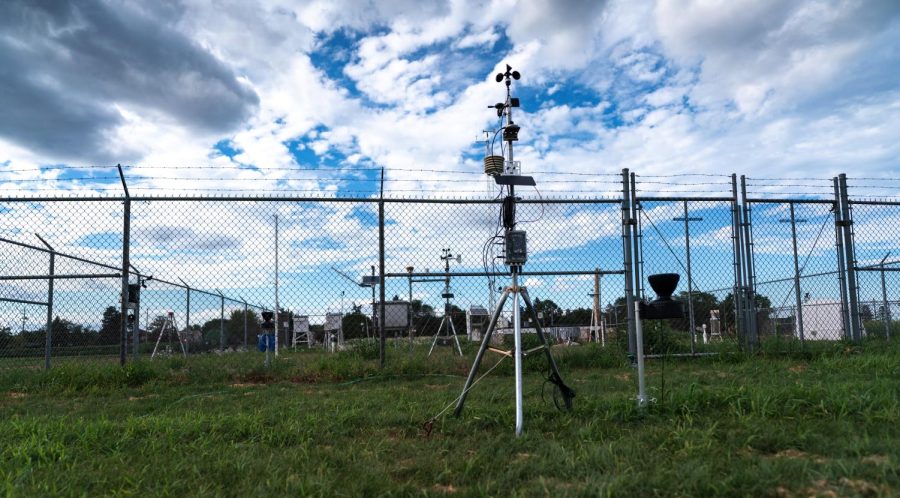Faculty researchers from the University of Minnesota are analyzing information about recent climate events from across the world and informing communities about their impacts through initiatives related to climate change and a weather station on campus.
Recently there have been record heat waves in the Pacific Northwest and deadly floods in Kentucky. Reservoirs in the western U.S. are at low level and the Twin Cities area is experiencing severe drought conditions. All of these events are part of what the United Nations called a “climate crisis”.
The University’s Climate Adaptation Partnership (MCAP) is gathering information about changing climate patterns across the Midwest to inform communities about potential climate impacts. Local and University leaders, state and federal governments as well as private partners, formed MCAP in 2008 to develop solutions for adapting to climate change.
MCAP tries to better prepare communities to combat the consequences of climate change, such as increases in diseases and heat-related deaths, by analyzing events happening in other parts of the country and identifying risks caused by climate change.
“We expect many of these events to worsen and become longer in duration and more intense,” Heidi Roop, the director of MCAP and an assistant professor of climate science, said.
Roop said the Midwest region is expected to experience more premature deaths caused by air quality and heat-related illnesses, along with more floods, rain and damage to infrastructure.
“These patterns of events are deeply concerning because they have a human and ecosystem toll, and they impact many of the things that we, as a global society, rely on,” Roop said.
Ecosystems that the changing climate could impact include a prolonged growing season for farmers, fewer days with extreme cold weather and an increase in pests, Roop said.
In addition to MCAP, researchers from across the University have led various initiatives with the intent of analyzing climate patterns, including the College of Education and Human Development’s Center for Climate Literacy and The Swain Climate Policy Series at the Humphrey School of Public Affairs.
“We are really working at the interface of research and community response and working with a lot of communities, state agencies and tribal partners to prepare for or adapt to the changing climate,” Roop said.
There is also a research weather station located on the St. Paul campus which gathers data about weather conditions in the Twin Cities area. The National Weather Service (NWS) uses the data, which is available to the general public through the Minnesota Department of Natural Resources’ website.
Assistant State Climatologist at the Minnesota State Climate Office Peter Boulay currently manages the weather station, where he measures soil and air temperatures, along with rain and snowfall rates.
Boulay is part of a large volunteer network where volunteers from across the country submit weather data to the NWS. A general interest in climate prompted him to start volunteering for the NWS and manage the weather station, which he has been doing for over 20 years.
Boulay said the station’s location on the St. Paul campus makes it easy for the public to access weather data about the Twin Cities without any human interference.
“It’s away from any paved areas, so it’s in the middle of a field. It’s a really good spot for climatological data, and it’s far from any buildings,” Boulay said.
Kenneth Blumenfeld, the senior climatologist at the Minnesota State Climate Office, said the landscape where the weather station is located is important for identifying temperature variations across the Twin Cities.
“This makes it a relatively cool spot within what’s known as an ‘urban heat island.’ Its temperatures are often lower than those at the Twin Cities airport and at some suburban locations,” Blumenfeld said.
Climatologists then use the data to predict future weather conditions, such as using snowfall rates to determine the possibility of spring flooding. Boulay said this data can benefit homeowners because they can use it to help care for their property, such as watering front yards or gardens.
The Department of Commerce recently honored Boulay for nearly 20 years of work at the station, and he said he sees value in taking observations and working with other volunteers to inform the public about what is happening in their communities.
“Everyday is a little bit different with the weather,” Boulay said. “There’s always something interesting going on.”
—
The data that Boulay specifically measures can be accessed through the Minnesota DNR’s website.



















Meat Eater
Aug 10, 2022 at 3:58 pm
They could start by explaining how much of climate change is “man made” and how much is due to “nature”. We all know the earth has been warming for roughly 10,000 years, and there have been many heating and cooling periods throughout the earths history, so let’s stop the pretending that climate change is something new caused by the industrial age.
Until that is done, any discussion of how we are bringing about climate change, well, you are nothing but a modern day Chicken Little dressed up to look like a scientist.